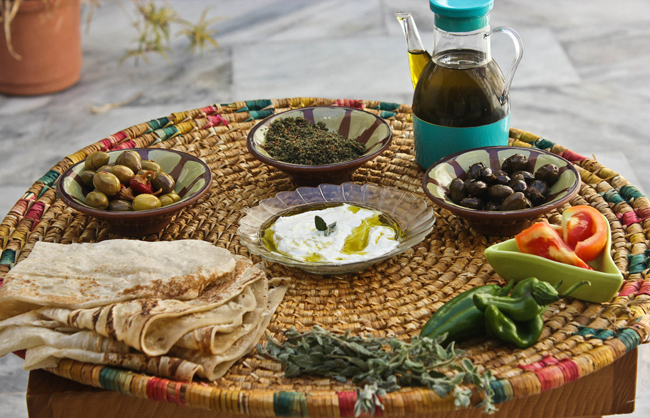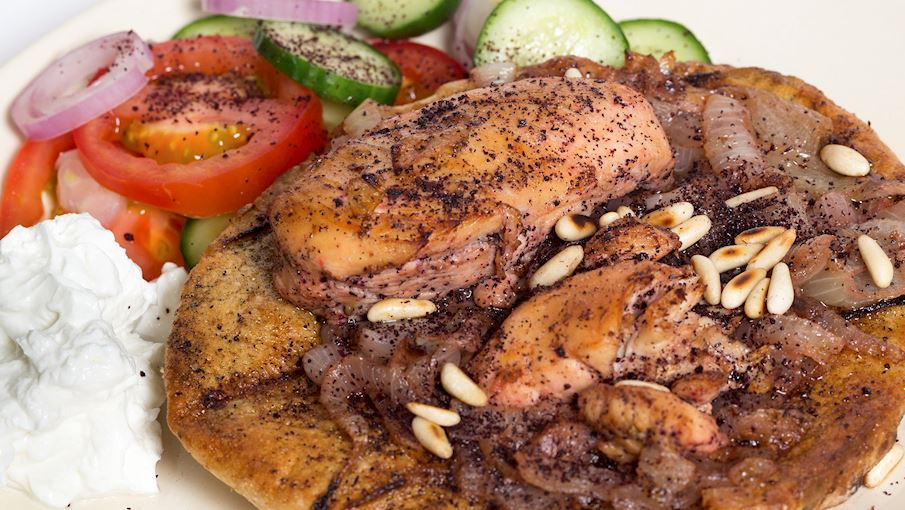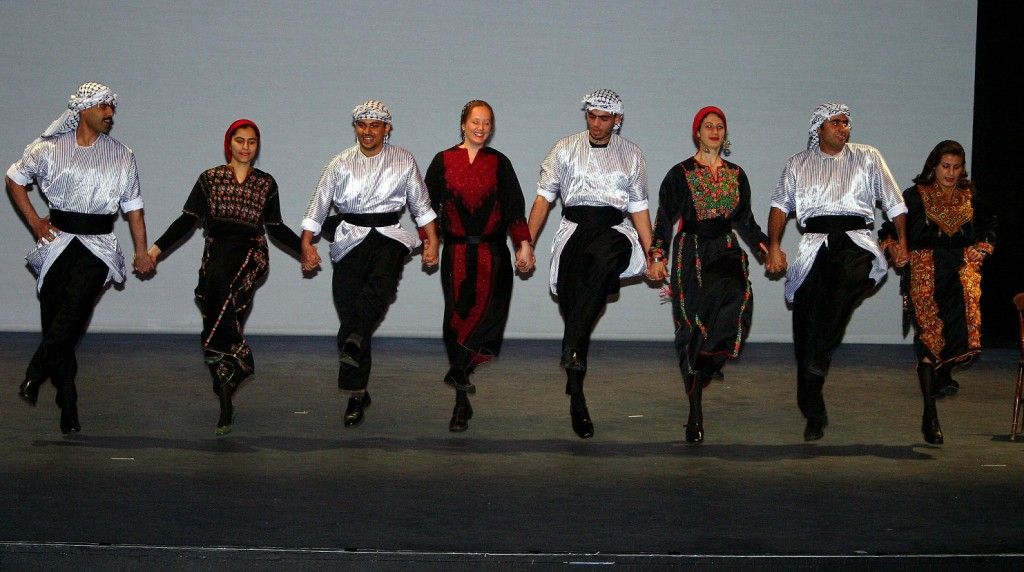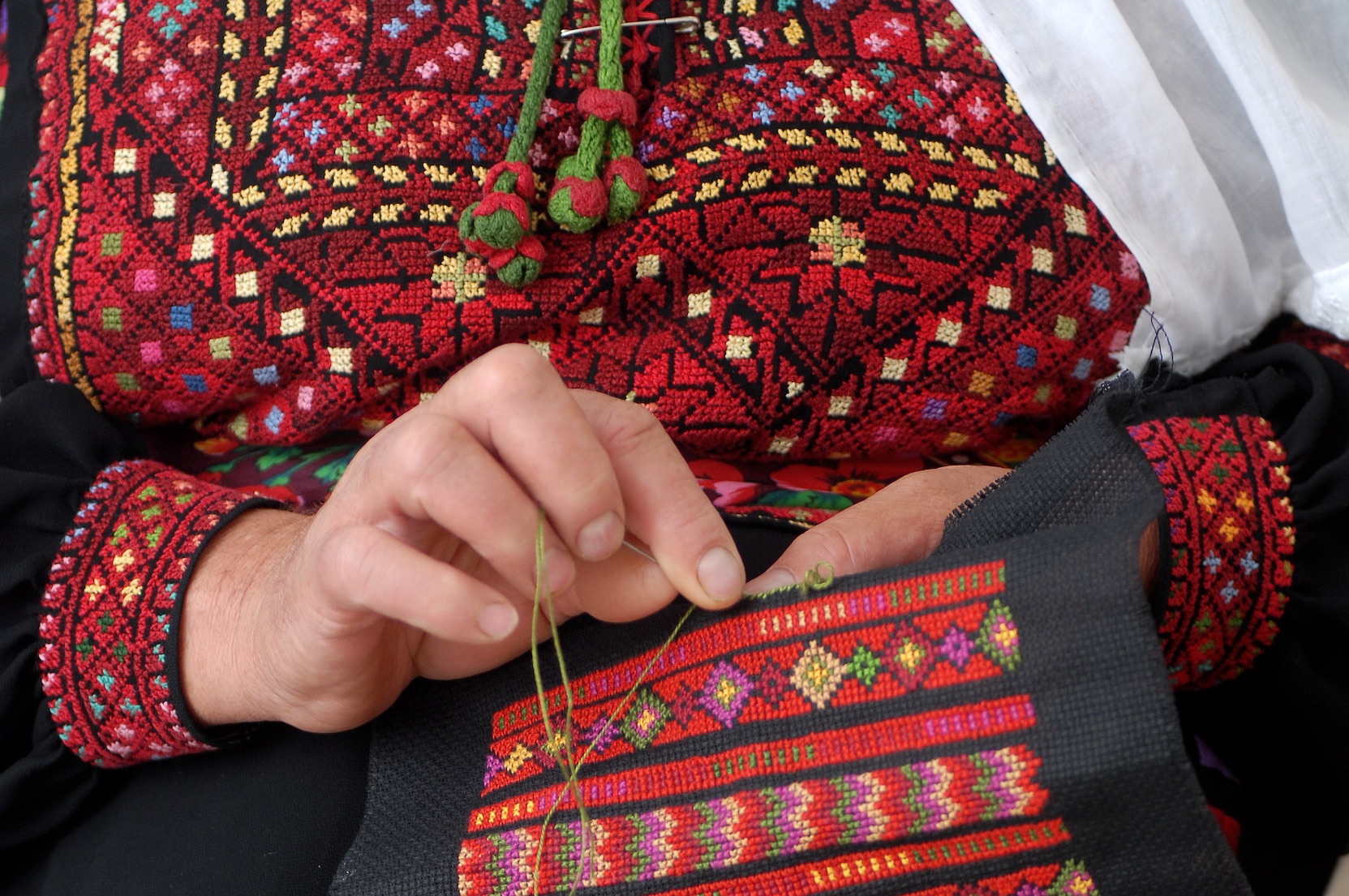
Palestinian Cuisine, Music and Heritage – the perfect combination!
Palestinian Cuisine, Music and Heritage – the perfect combination!
By Daoud Baboun, a Tour Guide graduate
Food
Have you ever thought that the food you are eating today in any Palestinian home could be the same food that Jesus ate at the Last Supper while He was in the Upper Room in Jerusalem, just before going to Gethsemane to pray?!
Yes, my friends! Here in Bethlehem we see many traditional dishes that used to be served thousands of years ago and are still served today. According to food magazines, when we talk about the Mediterranean countries, especially Middle Eastern countries, people agree that the best food is here, in this part of the world, that the best tastes are mixed and combined in this region. But hold on, what if we added in some great hospitality with it? Visitors will have the best experience ever, for sure! The fact is that Middle Eastern food, especially Palestinian food, is one of the oldest cuisines when it comes to time, one of the best when it comes to taste, and is one of the greatest in menu variety!
For me, I believe that food is like language; the more you practice it, the better you become at it. With food, the more time you spend practicing and serving meals, the tastier the result will be. Imagine if the food you are eating dates back to the Canaanite time – we are talking about a real history inside the food served with passion!
Around 10,000 years ago, a small group of people decided to stay in and around Tel AlSultan (Jericho) to start a small colony (which is considered the first human step toward civilization). Their ladies began to invent new meals to tempt their husbands who were working in fields all day, and with all those passing years, we can see many dishes added to the Canaanite-Palestinian menu.
When we talk about breakfast, I don’t mean cereal with milk. I am talking about real Palestinian food: zait and zatar (thyme, a local spice) with olive oil, falafel, hummus, and taboun (fresh bread baked over a bonfire).
We could talk for days about the lunch options. I am going to concentrate on Musakhan, one of the most familiar Palestinian meals, which is made out of fresh-baked taboun bread dipped into olive oil, topped with chopped onion and mixed with sumac (another local spice), with a piece of meat or chicken added to the top, and baked in the wood fire oven.
I am sure the dinner requires more space than our stomachs can handle, but if there was enough space, nothing can compare to the salads that are served such as Arabic Salad, Baba Ghanouj, hummus, t-hineh salad, fateh, and more. By the way, any of these salads are great just before the main barbecue dish!
Music
Dating back to 10,000 BC, in the area of Bethlehem, is where scholars and researchers at the end of the 20th Century found what is believed to be the real first human experience with fire, in a cave called “Um Katfa” in the St. Chariton (Khreton) Valley. Can you imagine the people who lived since then – two, three, or even four thousand years ago – gathered around the fire to sing and play music? Of course, they used very basic ways to express music (unlike today’s stunning instruments), however, our ancestors built up the base for almost everything we as humans do today. The Canaanites introduced the world to fire, and we could also be the ones who introduced the world to the first X-Factor or Idol shows!
When it comes to music, we Palestinians have our own heritage of folklore dances and music, including our traditional dance, the Dabkeh. We have some rare instruments that only Palestinian use, like the Shubabe and Yarghoul, and our singers are famous for the Zajal.
Heritage
All of these things – food, music, and dance – are intangible elements of our culture. Still, when it comes to tangible heritage, we have all the tools and equipment that our ancestors used, whether in fields or houses, like jars, basic seed collecting and grinding tools, simple kitchen tools, and so on. But one of the essential tangible elements of our heritage is the ladies’ embroidery “Tatreez,” which was used to identify a woman’s city or location. One can easily tell which area a woman is from based on the embroidery that fills her dress. You can differentiate many designs and colors in the art of embroidery. For instance, Jerusalem embroidery reflects the fact that it’s the Palestinian capital and the place where clashes often happen. In addition, it is the home of the Holy Sepulcher Church and the Dome of the Rock Mosque, so it has the gold and orange colors that fill the dress with a beautiful design. For example, this differs from Tulkarm, which has fewer designs since women used to work in fields more than women in other areas including the middle or southern parts of Palestine. Even deeper than that, single ladies used to wear different embroidery than married ones; a married woman might only stitch a simple new addition to the design of the dress, but it has to be there. This way, people can know where they are from and their basic social situation just from looking at them, without even talking to them. In the modern world, people wear rings to show their social status; previously in Palestine, it was embroidery.
Palestinians are rooted from Canaanites, which means we can see the influence of Palestinians not only locally – but across the world in general throughout history. Everybody is welcome to come and live an incredible experience here at the Holy Land, to walk in the streets, see and meet the people, have great memories and definitely try the local amazing Palestinian food that is served to you with passion and love from the people of the Holy Land.







